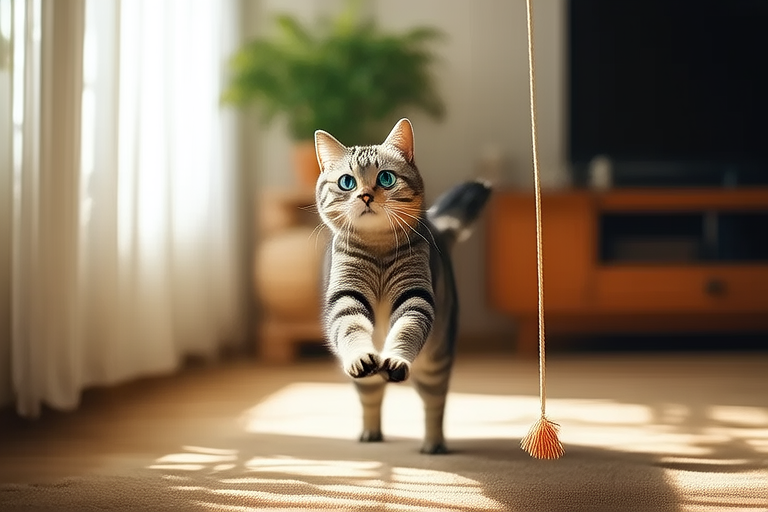Secrets to Keeping Your American Shorthair Happy and Healthy at Home
The American Shorthair is a beloved breed known for its friendly nature, robust health, and adaptability. These cats are perfect companions for families and individuals alike, but ensuring their happiness and health requires more than just love and attention. This guide will provide you with secrets to keeping your American Shorthair happy and healthy at home.
Dietary Needs
American Shorthairs have specific dietary requirements to maintain their health. They are obligate carnivores, meaning their diet should primarily consist of animal-based proteins. High-quality cat food that meets the nutritional standards set by organizations like the Association of American Feed Control Officials (AAFCO) is ideal. Ensure that your cat’s diet includes a balance of protein, fats, carbohydrates, vitamins, and minerals. Avoid feeding them excessive amounts of treats or human food, as this can lead to obesity and other health issues.
Exercise Routines Suitable for Indoor Environments
While American Shorthairs are generally active and playful, they may become sedentary if confined indoors without proper stimulation. Creating an enriching indoor environment is crucial for their physical and mental well-being. Provide toys that encourage jumping, pouncing, and climbing, such as feather wands, laser pointers, and interactive puzzle feeders. Set up a designated playtime each day to engage your cat in physical activity. Consider building a multi-level cat tree or installing shelves for your cat to explore vertically. Rotate toys periodically to keep your cat interested and engaged.
Grooming Tips Specific to Their Coat Type
American Shorthairs have short, dense coats that require minimal grooming compared to long-haired breeds. However, regular brushing helps remove loose hair, prevent matting, and distribute natural oils throughout the coat. Brush your cat once or twice a week with a slicker brush or comb to keep their fur shiny and healthy. Bathing is usually unnecessary unless your cat gets particularly dirty. When bathing, use a mild cat shampoo and be gentle to avoid irritating their skin. Additionally, check your cat’s ears weekly for any signs of infection or debris and clean them with a cotton ball dipped in a veterinarian-approved ear cleaner. Trim their nails every few weeks to prevent overgrowth and discomfort.
Common Health Issues They Face
American Shorthairs are generally healthy cats, but they are prone to certain genetic and environmental health issues. Regular veterinary care is essential for early detection and management of these conditions. Common health problems include:
- Hypertrophic Cardiomyopathy (HCM): A heart condition characterized by thickening of the heart muscle, which can lead to heart failure. Early diagnosis through echocardiograms and genetic testing can improve prognosis.
- Congenital Heart Defects: Some American Shorthairs may be born with structural abnormalities in their hearts, which can cause various symptoms ranging from mild to severe. Routine veterinary exams can help identify these defects early.
- Pancreatitis: Inflammation of the pancreas, often caused by dietary factors or underlying health conditions. Symptoms include vomiting, lethargy, and loss of appetite. Consult your veterinarian if you suspect pancreatitis.
- Feline Lower Urinary Tract Disease (FLUTD): A group of conditions affecting the bladder and urethra, leading to symptoms such as frequent urination, straining, and blood in the urine. FLUTD can be managed through dietary changes, increased water intake, and stress reduction.
Mental Stimulation Activities
Providing mental stimulation is vital for preventing boredom and promoting cognitive function in American Shorthairs. Engage your cat in interactive play sessions using toys that challenge their problem-solving skills, such as treat-dispensing balls or puzzle feeders. Rotate toys regularly to maintain interest and novelty. Create an enriched environment by setting up perches, tunnels, and hiding spots that encourage exploration and curiosity. Consider introducing a second cat or a pet-friendly companion animal for social interaction, but always monitor introductions carefully to ensure compatibility.
Regular Veterinary Care
Scheduling routine veterinary visits is crucial for maintaining your American Shorthair’s health. Annual check-ups allow veterinarians to monitor your cat’s overall well-being, catch potential issues early, and provide preventive care such as vaccinations and parasite control. Senior cats may benefit from more frequent examinations to address age-related changes. Follow your veterinarian’s recommendations regarding dental care, weight management, and behavior modification if needed. Establish a strong relationship with your vet by communicating openly about your cat’s habits, preferences, and concerns.
Creating a Safe, Enriching Home Environment
Designing a safe and enriching home environment enhances your American Shorthair’s quality of life. Secure windows and balconies to prevent accidental falls. Use childproof locks on cabinets containing hazardous substances, and store medications out of reach. Install safety gates to restrict access to dangerous areas like kitchens or basements. Provide multiple litter boxes placed in quiet locations around your home, especially if you have multiple cats. Ensure each box has low sides for easy entry and is kept clean to encourage usage.
Practical Tips for Owners
- Provide scratching posts to satisfy your cat’s instinctual need to scratch and help maintain nail health.
- Offer a variety of resting places, including cozy beds, window sills, and elevated platforms.
- Introduce new pets gradually and under supervision to minimize stress and conflicts.
- Use pheromone diffusers or sprays to create a calming atmosphere during stressful situations.
- Consider adopting another compatible cat for companionship if your American Shorthair shows signs of loneliness.
By following these secrets, you can ensure your American Shorthair leads a happy and healthy life at home. Remember that each cat is unique, so tailor your approach based on your pet’s individual needs and preferences. With proper care and attention, your American Shorthair will thrive as a cherished member of your family.
